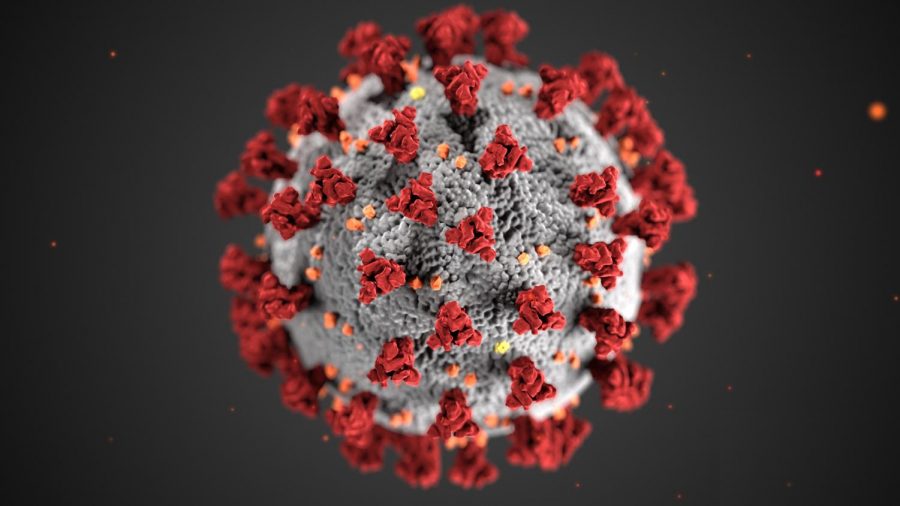GV departments collaborate to detect COVID-19 in wastewater
Jan 19, 2021
Grand Valley State University’s Annis Water Resources Institute (AWRI) and Cell and Molecular Biology (CMB) Department are working together to continue work on a pilot study that monitors and detects COVID-19 in wastewater samples from GVSU’s campus.
In October, GVSU was one of 17 labs in Michigan to receive funding from the state’s Department of Environment, Great Lakes and Energy (EGLE) through the Coronavirus Aid, Relief, and Economic Security (CARES) Act. The funding allowed researchers to use ddPCR testing to find virus markers wastewater samples.
The grant awarded GVSU $318,000 to conduct the study and a $200,000 bonus for equipment to be used by Dec. 31, 2020. In the new year, GVSU has continued to fund the project, creating their own “pilot study” of campus, according to co-principal investigator Sheila Blackman.
“The results from last semester were compelling enough to convince the Grand Valley administration that this work was worth funding, so they picked up the tab, at least for the dorms, for a few weeks into this semester,” Blackman said. “This is sort of like Grand Valley’s pilot study on the wastewater to see whether it works for them.”
Greg Sanial, head of the Virus Action Team, said that the study was not up and running in time for it to impact the targeted testing program for the fall 2020 semester, however, the wastewater testing fits into the overall surveillance of COVID-19 on campus.
“It is a part of our overall surveillance testing program,” Sanial said via email. “It lacks individual specificity, and will never replace the program to test individuals, but can indicate areas on campus that may warrant additional focused individual testing.”
In addition to testing samples from dorms on both the Grand Rapids and Allendale campuses, samples from Muskegon, Grand Haven, Spring Lake, Allendale, four off-campus housing complexes and mobile home communities were also part of the study in 2020, said co-principal investigator Rick Rediske.
“Grand Valley has given us some internal funding to continue testing the dorms, so we’re just doing the dormitory testing now and we’re not testing other cities and things like that,” Rediske said. “We hope to get additional funding to continue testing more samples, but all we have right now is just the testing of the dormitories.”
One of the challenges researchers faced initially was receiving the equipment needed to begin work on the study. Rediske said the lab at AWRI had not received all of the equipment they needed until the week before thanksgiving.
“The state gave all of these different labs this equipment to work with, but that caused this huge demand for not only the ddPCR, but also centrifuges, freezers, etcetera,” Blackman said.
Rediske said that while getting 17 labs set up and working on a procedure they have never done before was challenging, the skills and knowledge will be a great resource for the future.
“The ddPCR, we can use it for all sorts of other types of projects related to human and environmental health,” Rediske said. “Just having the instruments is going to be really good for the future of the university.”
Now that the specialized labs are set up according to a robust safety plan, equipment is in place and personnel are trained, the lab is able to supply results to GVSU every two to three days.
Although the data is not yet public, Rediske said that the results are uploaded to a map that displays the results for each coordinate a sample was taken from. Rediske said that the data is expected to be available in the coming months as work on the website is in progress now.
Although they are focused on testing samples from GVSU, co-principal investigator Pei-Ln Tsou, Blackman and a team of grad student researchers are also working with the Kent County Health Department to train their scientists on different parts of the wastewater testing process.
Tsou said that there are many potential uses of the testing method, including at schools, hospitals, adult care facilities and anywhere that people are congregating. For example, testing wastewater at a school or in a certain zip code would indicate which schools or neighborhoods need to stay in place, isolate or be tested individually while others remain open.
“In terms of giving people and policymakers more tools and data- not just for COVID, but other diseases to come,” Tsou said. “I can’t think of a better way.”
























